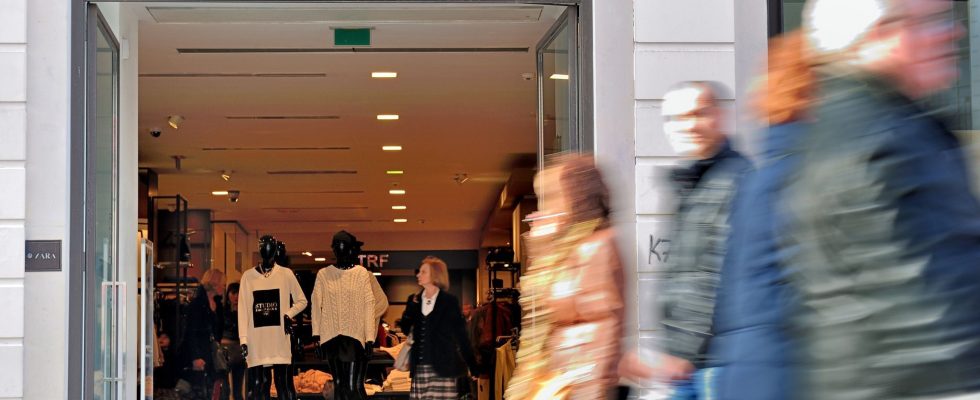Sometimes it only takes one new player to shake up an entire market. There is no shortage of examples: Tesla and its electric cars in the automobile industry, Spotify and its streaming application in music, Amazon and its online sales site in distribution… In textiles, the scarecrow is called Vinted. The Lithuanian second-hand platform, launched in 2008, took time to find a place, following the growth of this market each year, before distinguishing itself from 2012-2013. It is now well established in the purchasing habits of the French. In the second quarter of 2023, it even took third place from Cdiscount among the most visited online commerce sites in France with 17 million unique visitors.
Feeling the tide turning and market share slipping away, ready-to-wear brands have made a major shift in their strategy in recent years by launching their own second-hand service. “We quickly observed that our brands were extremely present on Vinted and on other platforms. So there was definitely a life after the first hand that was being organized around us. At one point, we said to ourselves that there was “We absolutely had to formalize our project”, says Isabelle Guichot, general director of the French ready-to-wear group SMCP. Its flagship brands, Sandro and Maje, respectively opened their second-hand platforms in October 2021 and October 2022. The company now ensures that it sells 80% of the clothing taken back. Five years earlier, Cyrillus had paved the way for this change of model, an example since followed by many brands, notably Aigle. The latest one? The Spanish giant Zara, at the beginning of September. According to the French Federation of Women’s Ready-to-Wear (FFPAPF), 40% of the sector now has such an offer.
Advantages against Vinted
It must be said that the sector is struggling in France. In recent months, we have lost count of the number of brands placed in receivership. At issue: competition from online sales and environmental concerns which increasingly influence the choices of certain consumers. Added to this is the inflationary pressure which reinforces the austerity treatment that fashion brands are undergoing. With second hand, brands have a major advantage over Vinted. “They can assert a role of reassurance to their customers by reconditioning the clothes and certifying them,” illustrates Yohann Petiot, general director of the Alliance du Commerce. The prospects for the second-hand market appear considerable. In 2022, it was valued at 7 billion euros in France and is expected to grow significantly in the coming years. Globally, it is expected to grow from $177 billion to around $350 billion in 2027. “Brands have realized that they need to capture this market because there is value customer [NDLR : chiffre d’affaires supplémentaire] and potentially repurchase”, adds Thibaut Ledunois, director of the FFPAPF entrepreneurship department.
Still in the running-in period, the actors are starting to move beyond the experimental framework of the last five years. “The volumes sold are becoming interesting, while logistics are improving. The question is: how do we manage to make already worn products profitable?”, explains Thibaut Ledunois. For François-Xavier Leroux, digital, client and innovation partner at KPMG, “this model is profitable for brands that do not support the entire supply chain. For those that take care of everything while selling a product that is ultimately not so expensive, this questions the economic model. Everyone is still looking for a little, but it’s the beginning.” Another challenge: convincing the brand’s customers to prefer its resale platform to that of Vinted. To do this, most offer discount coupons in the hope of attracting them to their stores or to their online sales site. “In all the cases of companies that I have studied, the big problem concerns collection. They have every interest in passing on the cost of collection to their consumers by making them travel,” estimates Nicolas Béfort, director of the chair bioeconomy and sustainable development in Neoma.
Luxury, a special case
For the moment, this second-hand market is mainly online. An above all pragmatic choice. “Proposing an offer is complicated in person, because it will be relatively limited. Online, brands can present a much larger catalog, they attract more customers,” explains François-Xavier Leroux. This is also one of the next questions from SMCP, which would like to launch its Claudie Pierlot brand into the deep end. “We don’t want to make a mistake. Often, items are personalized, made to the right length and size. For example, a suit that has been altered, you need to be able to try it on. It might be there “above that the “physical” component will become essential”, predicts Isabelle Guichot.
In the second hand, the luxury segment is a special case, questions arise before launching. Specialists like Vestiaire Collective, Monogram Paris and Collector Square have taken the lead. “The sector is concerned with after-sales and maintenance services to promote the durability of products. Brands know where their parts are. These are perhaps the beginnings of a future service,” believes François-Xavier Red. At LVMH, we prefer to stay away from this trend. “Be careful of the rebound effect. This pushes people to buy more while looking for the right deal,” argues Hélène Valade, Environmental Development Director of the luxury giant. We studied this path carefully before deciding to leave it aside. We are the choice of a second life rather than a second hand.
.
